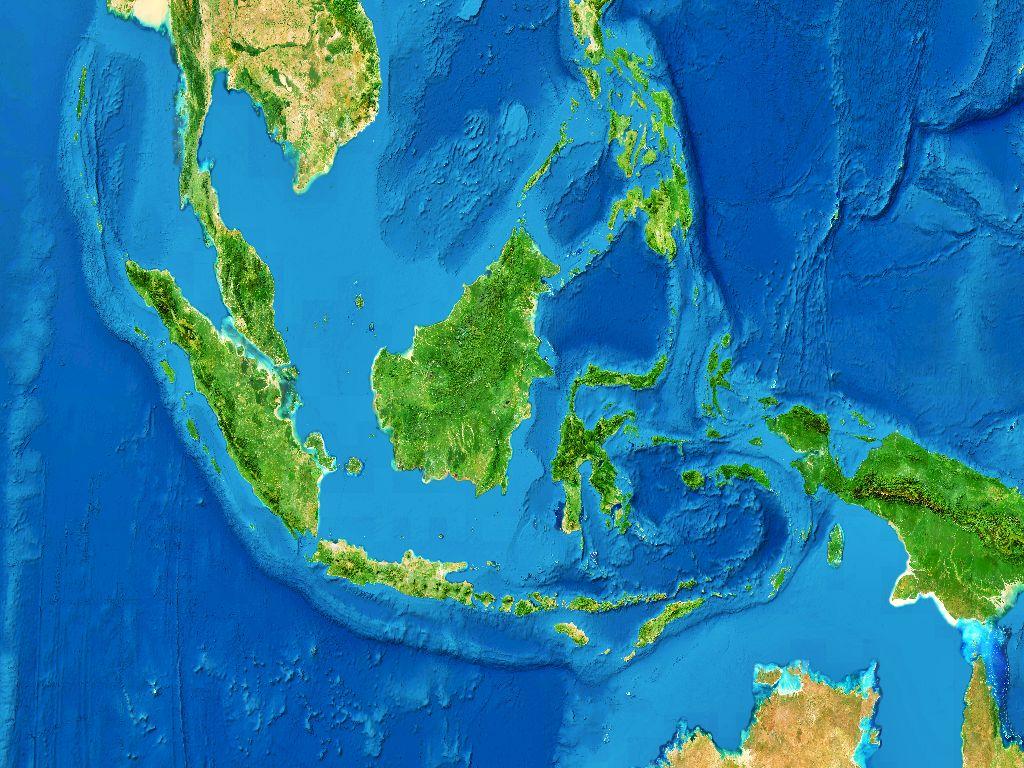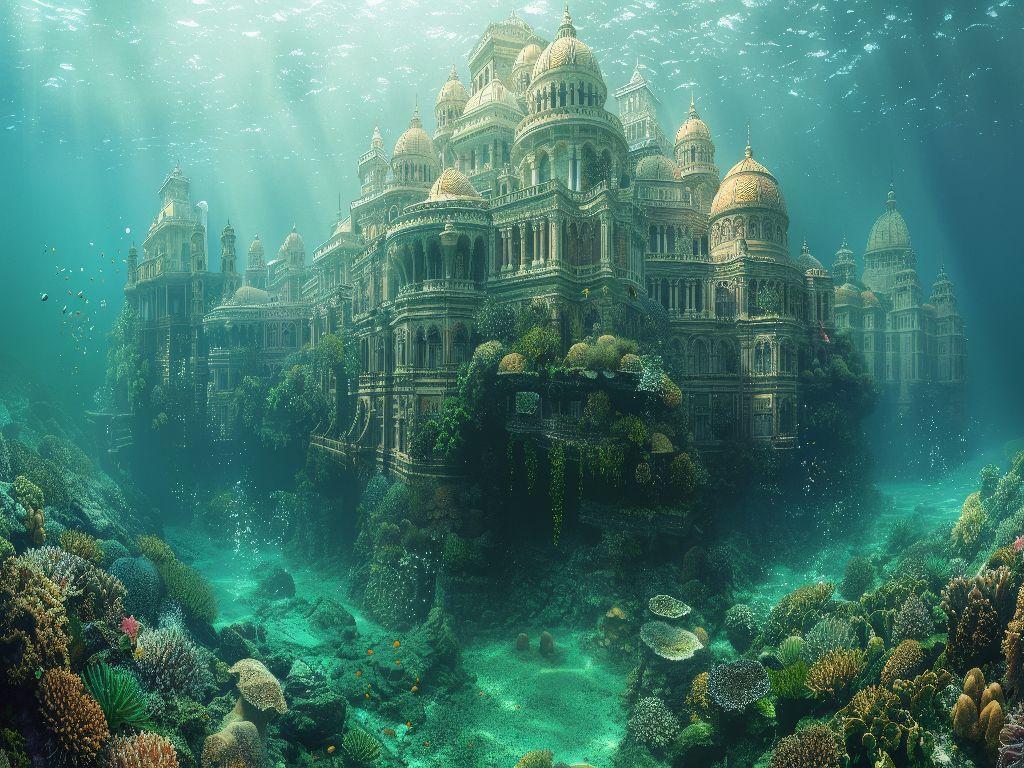Unraveling the Mysteries of Lemuria
The concept of a lost continent has long fascinated historians and enthusiasts alike. One such enigmatic landmass is said to have existed in the distant past, sparking intense debate and curiosity.
At the heart of this intrigue lies the story of Lemuria, a hypothetical continent believed to have been home to ancient civilizations. As we explore the mysteries surrounding this fabled land, we uncover a rich tapestry of theories and legends.
Key Takeaways
- The legend of Lemuria has captivated imaginations for centuries.
- The concept of a lost continent is rooted in historical and mythological contexts.
- Exploring Lemuria's mysteries offers insights into ancient cultures and civilizations.
- Theories surrounding Lemuria continue to evolve, sparking ongoing debate.
- Delving into the story of Lemuria provides a unique perspective on human history.
The Legend of Lemuria: Origins and First Mentions
The concept of Lemuria began to take shape in the 19th century, influenced by various scientific discoveries and mythological accounts. This period saw a surge in interest in natural history and the exploration of the world's oceans, laying the groundwork for the Lemurian hypothesis.
The Birth of the Lemurian Hypothesis
The Lemurian hypothesis gained momentum through the work of several key figures. Philip Sclater, an English zoologist, played a crucial role in the development of the theory.
Philip Sclater's 19th Century Theory
In 1864, Sclater proposed the existence of a lost continent to explain the distribution of lemurs in Madagascar and India. His theory, though later disputed, marked the beginning of Lemurian lore.
The Lemur Connection
The name "Lemuria" was chosen due to the presence of lemurs in both Madagascar and India, suggesting a land bridge or continent that once connected these regions.
Early Scientific and Occult Theories
As the concept of Lemuria evolved, it attracted the attention of both the scientific community and occultists. Ernst Haeckel, a German biologist, supported the idea, while Theosophical Society founders, including Helena Blavatsky, incorporated Lemuria into their esoteric teachings.
Ernst Haeckel's Contributions
Haeckel, known for his work on evolution, saw Lemuria as a plausible explanation for the geographical distribution of early humans.
Theosophical Interpretations
The Theosophical Society interpreted Lemuria as a root race, an ancient civilization with advanced spiritual capabilities, further enriching the legend.
Understanding Lemuria: Geographical Theories and Locations
Exploring the geographical theories surrounding Lemuria reveals a complex and intriguing narrative. The search for this lost continent has captivated historians and enthusiasts alike, with various locations proposed over time.
Proposed Locations in the Pacific and Indian Oceans
The Pacific and Indian Oceans have been at the center of Lemurian geographical theories. Two primary hypotheses have emerged: the Pacific Lemuria Theory and the Indian Ocean Hypothesis.
The Pacific Lemuria Theory
This theory suggests that Lemuria was located in the Pacific Ocean, potentially connecting modern-day islands and island nations. Proponents argue that this region's unique geology and biodiversity support the existence of a lost continent.
The Indian Ocean Hypothesis
Alternatively, some researchers propose that Lemuria was situated in the Indian Ocean, possibly linking India, Madagascar, and other regional landmasses. This theory is supported by certain geological and oceanographic features.
Geological Evidence and Modern Scientific Perspectives
Modern science has shed light on Lemuria's possible existence through continental drift and plate tectonics. While the scientific consensus remains skeptical, these theories provide a framework for understanding the geological history of the regions in question.
| Theory | Location | Supporting Evidence |
| Pacific Lemuria Theory | Pacific Ocean | Geology, Biodiversity |
| Indian Ocean Hypothesis | Indian Ocean | Geological Features, Oceanography |
The History of Lemuria and Its Civilization
Unraveling the history of Lemuria and its civilization is a complex task that involves examining diverse perspectives and theories. The Lemurian culture, rich in mystery and intrigue, has captivated the imagination of many.
Timeline of Lemurian Development
The development of Lemuria is often shrouded in myth, but various theories attempt to outline its timeline.
Proposed Age of the Civilization
Some theories suggest that Lemuria flourished millions of years ago, during a period of significant geological change.
Stages of Lemurian Evolution
The evolution of Lemurian society is believed to have gone through several stages, from primitive beginnings to a sophisticated civilization.
- Early stages of development focused on survival and adaptation.
- As the civilization grew, so did its technological and spiritual advancements.
Theories About the Continent's Destruction
The downfall of Lemuria is a topic of much speculation, with theories ranging from cataclysmic events to gradual submergence.
Cataclysmic Events
Some believe that Lemuria was destroyed by powerful natural disasters, such as earthquakes or floods.
Gradual Submergence Theories
Others propose that the continent sank gradually into the ocean due to geological changes.
"The destruction of Lemuria is often linked to the rise and fall of other ancient civilizations, suggesting a complex interplay of global events."
The history of Lemuria and its civilization remains a fascinating and complex topic, inviting continued exploration and speculation.
Lemurian Society and Culture: What We Think We Know
Exploring Lemurian society reveals a complex interplay of social structures and cultural advancements. The mystique surrounding Lemuria has led to various speculations about its societal fabric and cultural achievements.
Social Structure and Governance
The social structure of Lemuria is believed to have been highly organized, with a strong emphasis on community and cooperation. This is reflected in its governance, which is thought to have been guided by wise and compassionate leaders.
Leadership Systems
Lemurian leadership is often described as being based on spiritual wisdom and a deep understanding of the natural world. Leaders were likely chosen for their ability to maintain harmony within the community and with the environment.
Community Organization
The community was likely organized into a cohesive unit, working together for the betterment of all. This organization would have facilitated the construction of complex architectural projects and the development of advanced technologies.
Art, Architecture, and Technology
Lemurian art and architecture are speculated to have been highly advanced, reflecting a deep connection to the spiritual and natural world. Their technology is believed to have been similarly sophisticated, with some theories suggesting the use of advanced energy sources and construction techniques.
Building Techniques and Structures
Lemurian building techniques are thought to have incorporated a deep understanding of the earth's energies and the use of crystals, such as Lemurian crystals, for healing and structural integrity. Their structures were likely designed to be in harmony with the natural environment.
Advanced Technologies Attributed to Lemurians
Some theories attribute advanced technologies to the Lemurians, including the use of Lemurian crystals for energy and healing purposes. These technologies are believed to have been highly sophisticated and ahead of their time.
The study of Lemurian society and culture offers a fascinating glimpse into a civilization that is believed to have possessed a deep understanding of the world and its mysteries. While much is speculative, the allure of Lemuria continues to captivate those interested in lost civilizations and their potential achievements.
The People of Lemuria: Characteristics and Abilities
The people of Lemuria are often portrayed as being deeply connected to nature and possessing advanced spiritual and psychic abilities. This connection to the natural world and their purported abilities have been subjects of interest across various traditions and accounts.
Physical Descriptions in Various Traditions
Descriptions of the Lemurians vary, but there are common themes regarding their physical appearance. Some accounts suggest they were tall, with heights ranging from 8 to 12 feet, and had distinctive physical features that set them apart from other populations.
Height, Appearance, and Distinctive Features
Lemurians are often described as having slender yet robust bodies, with some traditions mentioning large eyes and elongated heads. These physical traits are said to be adaptations to their environment and lifestyle.
Evolutionary Adaptations
The harsh environment of Lemuria, with its unique geological and climatic conditions, is believed to have driven specific evolutionary adaptations. These adaptations enabled the Lemurians to thrive in their ecosystem, with some accounts suggesting they had enhanced sensory capabilities.
Spiritual and Psychic Capabilities
Beyond their physical characteristics, the Lemurians are often associated with advanced spiritual and psychic abilities. These capabilities are said to have been integral to their way of life and their connection to the natural world.
Telepathic Communication
One of the most commonly cited abilities of the Lemurians is telepathic communication. This allowed them to connect with each other and with nature on a deep level, facilitating a harmonious and advanced society.
Connection with Nature and Elements
The Lemurians are also said to have had a profound connection with the elements and the natural world. This connection enabled them to harness the power of nature and live in balance with their environment, reflecting a deep understanding of the intricate web of life.
In summary, the people of Lemuria are described as being highly evolved, both physically and spiritually. Their connection to nature and their advanced capabilities make them a fascinating subject of study and speculation.
Lemurian Crystals and Their Purported Powers
Lemurian crystals, with their intriguing history and purported powers, have become a focal point in modern spiritual practices. These crystals are believed to have originated from the lost civilization of Lemuria, a mythical continent said to have existed in the distant past.
Origin and Characteristics of Lemurian Seed Crystals
Lemurian Seed Crystals are characterized by their unique striations and ladder-like structures on their surface. These physical attributes are believed to hold the key to their spiritual significance.
Physical Properties and Identification
The crystals are typically quartz crystals with horizontal striations on their sides, which are thought to contain encoded information from the Lemurian civilization. The presence of these striations is a key factor in identifying a Lemurian crystal.
Where They Are Found Today
Lemurian crystals are primarily found in Brazil and Colombia, areas known for their rich quartz deposits. The crystals from these regions are highly prized by collectors and spiritual practitioners.
Modern Uses and Beliefs About Lemurian Crystals
Lemurian crystals are used in various healing practices and meditation rituals. They are believed to facilitate a deep connection with the Lemurian energy, promoting spiritual growth and healing.
Healing Applications
Practitioners use Lemurian crystals in healing sessions to tap into their purported powers. They are believed to help in balancing the body's energy and promoting emotional healing.
Meditation and Spiritual Connection
During meditation, Lemurian crystals are used to connect with the Lemurian civilization's energy. This connection is believed to enhance spiritual awareness and facilitate personal growth.
| Properties | Beliefs | Uses |
| Unique striations | Encoded information | Healing sessions |
| Ladder-like structures | Spiritual significance | Meditation rituals |
| Quartz composition | Connection to Lemuria | Energy balancing |
Lemuria in World Mythology and Religious Texts
Lemuria's presence in global mythology is a fascinating topic that reveals parallels between different cultural narratives. The legend of Lemuria has been referenced in various ancient texts, showcasing its significance across different cultures and religious traditions.
Parallels in Ancient Eastern Traditions
Lemuria is mentioned in several ancient Eastern texts, highlighting its importance in the mythology of these regions. The concept of a lost continent resonates deeply within these cultural narratives.
Hindu References to Lemuria
In Hindu mythology, Lemuria is associated with the concept of a lost continent known as Kumari Kandam. This mythological land is described in ancient Tamil texts, which narrate the story of a civilization lost to the seas.
Buddhist and Tibetan Connections
Buddhist and Tibetan traditions also reference Lemuria, often linking it to spiritual and mystical beliefs. The idea of a hidden or lost land is a recurring theme in these cultures.
Connections to Other Lost Civilization Myths
The myth of Lemuria is not isolated; it shares similarities with other lost civilization myths from around the world. These legends often contain common motifs and themes.
Comparisons with Atlantis
One of the most well-known lost civilization myths is that of Atlantis. Like Lemuria, Atlantis is described as a advanced civilization that succumbed to natural disasters. The parallels between these two legends are striking.
Similarities to Mu and Other Sunken Lands
Lemuria is also compared to other lost lands such as Mu, a mythical continent said to have existed in the Pacific Ocean. These legends share common elements, such as the idea of a catastrophic event leading to their downfall.
| Lost Civilization | Cultural Reference | Mythological Significance |
| Lemuria | Hindu, Buddhist, Tibetan | Lost continent, spiritual significance |
| Atlantis | Greek | Advanced civilization, natural disaster |
| Mu | Pacific Island Cultures | Mythical continent, catastrophic event |
The study of Lemuria in world mythology and religious texts offers a glimpse into the shared human experiences and cultural narratives that transcend geographical boundaries. By examining these legends, we can gain a deeper understanding of the historical and cultural contexts in which they were developed.
Modern Interpretations and New Age Perspectives on Lemuria
As we delve into the modern interpretations of Lemuria, we find a rich tapestry of beliefs and theories that reflect our ongoing fascination with this lost continent. The concept of Lemuria has evolved significantly, incorporating various spiritual and esoteric perspectives.
Channeled Information and Psychic Readings
Many modern interpretations of Lemuria are based on channeled information and psychic readings. These sources provide insights into the culture, achievements, and downfall of the Lemurian civilization.
Notable Channelers and Their Claims
Notable channelers such as Ramtha and Joshua Tree have shared extensive information about Lemuria, describing it as a highly advanced civilization with sophisticated technology and deep spiritual understanding.
Common Themes in Modern Lemurian Narratives
Common themes in these narratives include the Lemurian emphasis on spiritual growth, their advanced knowledge of healing arts, and their connection to nature. These stories often highlight the Lemurians' ability to live in harmony with their environment.
Lemuria in Contemporary Spiritual Movements
Lemuria has become a significant element in various contemporary spiritual movements, influencing practices and beliefs related to personal growth and spiritual evolution.
Lemurian Fellowship and Similar Organizations
Organizations like the Lemurian Fellowship promote teachings inspired by the Lemurian ideals, focusing on spiritual development and the application of Lemurian principles in daily life.
Integration into Modern Spiritual Practices
The integration of Lemurian concepts into modern spiritual practices is evident in the growing interest in Lemurian healing techniques and the use of Lemurian crystals for their purported spiritual and healing properties.
| Aspect | Modern Interpretation | Significance |
| Spiritual Growth | Emphasis on personal and collective spiritual evolution | Guides individuals towards higher consciousness |
| Healing Arts | Advanced knowledge and application of natural healing | Promotes holistic well-being |
| Connection to Nature | Living in harmony with the environment | Encourages sustainable living practices |
Exploring Lemuria Today: Archaeological Sites and Expeditions
As we dive into the 21st century, the quest to uncover Lemuria's secrets continues with renewed vigor. Modern researchers are employing cutting-edge technology to explore the possibility of Lemuria's existence.
Potential Remnants and Underwater Discoveries
Researchers have identified several locations that could be linked to Lemuria, including underwater structures and Pacific island formations. Some of the most notable include:
- Underwater monuments and ruins
- Anomalous geological formations
- Crystal deposits associated with Lemurian legends
Yonaguni Monument and Other Underwater Structures
The Yonaguni Monument off the coast of Japan is one such example, sparking debate about its natural or artificial origins. Similar underwater structures have been discovered in other parts of the world, fueling speculation about their connection to Lemuria.
Easter Island, known for its giant moai statues, is another site that some researchers believe may have a connection to Lemuria. The cultural and architectural similarities between Easter Island and other Pacific islands are areas of ongoing study.
Scientific Expeditions and Their Findings
Several scientific expeditions have been conducted to explore potential Lemurian sites. These missions have yielded a range of findings, from controversial underwater discoveries to more mundane geological observations.
Notable Research Missions
Some of the most notable research missions include those led by marine archaeologists and geologists. Their work has shed light on the complexities of underwater exploration and the challenges of verifying legends like that of Lemuria.
Controversial Discoveries and Interpretations
The interpretation of findings from these expeditions often sparks controversy, with some arguing that certain discoveries are evidence of Lemuria, while others dismiss them as natural formations or misinterpretations.
Conclusion: The Enduring Legacy of Lemuria
The mystique of Lemuria continues to captivate the imagination of people around the world. From its origins in ancient legends to its modern interpretations in spiritual and cultural contexts, Lemuria remains a fascinating topic.
Throughout this article, we've explored the various facets of Lemuria, from its geographical theories and historical significance to its cultural and spiritual impact. The legend of Lemuria has evolved over time, influenced by diverse traditions and beliefs.
Today, Lemuria's legacy endures in the realms of spirituality, mythology, and popular culture. The concept of a lost paradise or advanced civilization continues to inspire artistic expression, spiritual exploration, and scientific inquiry.
As we reflect on the significance of Lemuria, it becomes clear that its impact extends beyond historical or archaeological interest. Lemuria represents a symbol of human curiosity and our quest for understanding the mysteries of the past.





